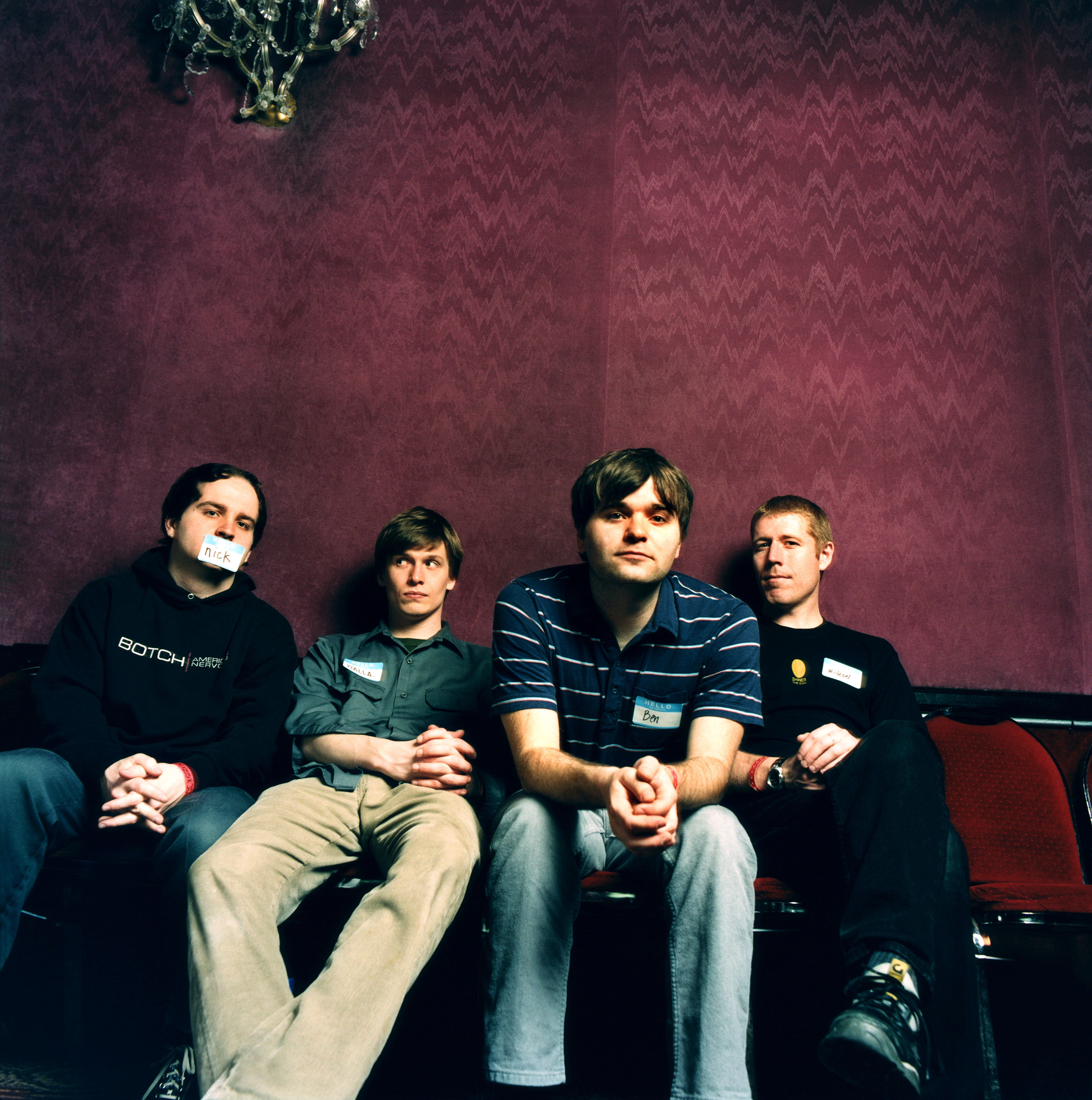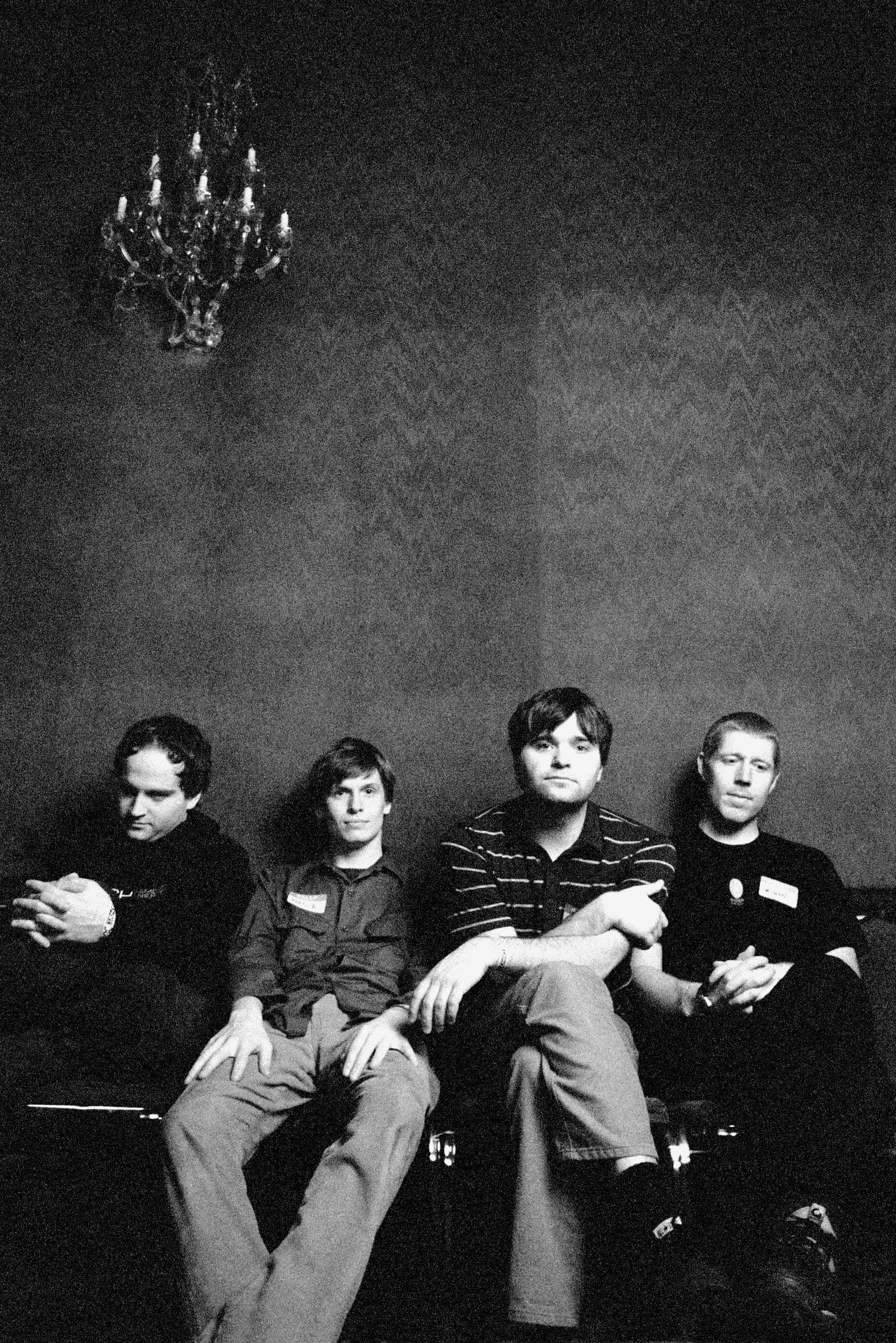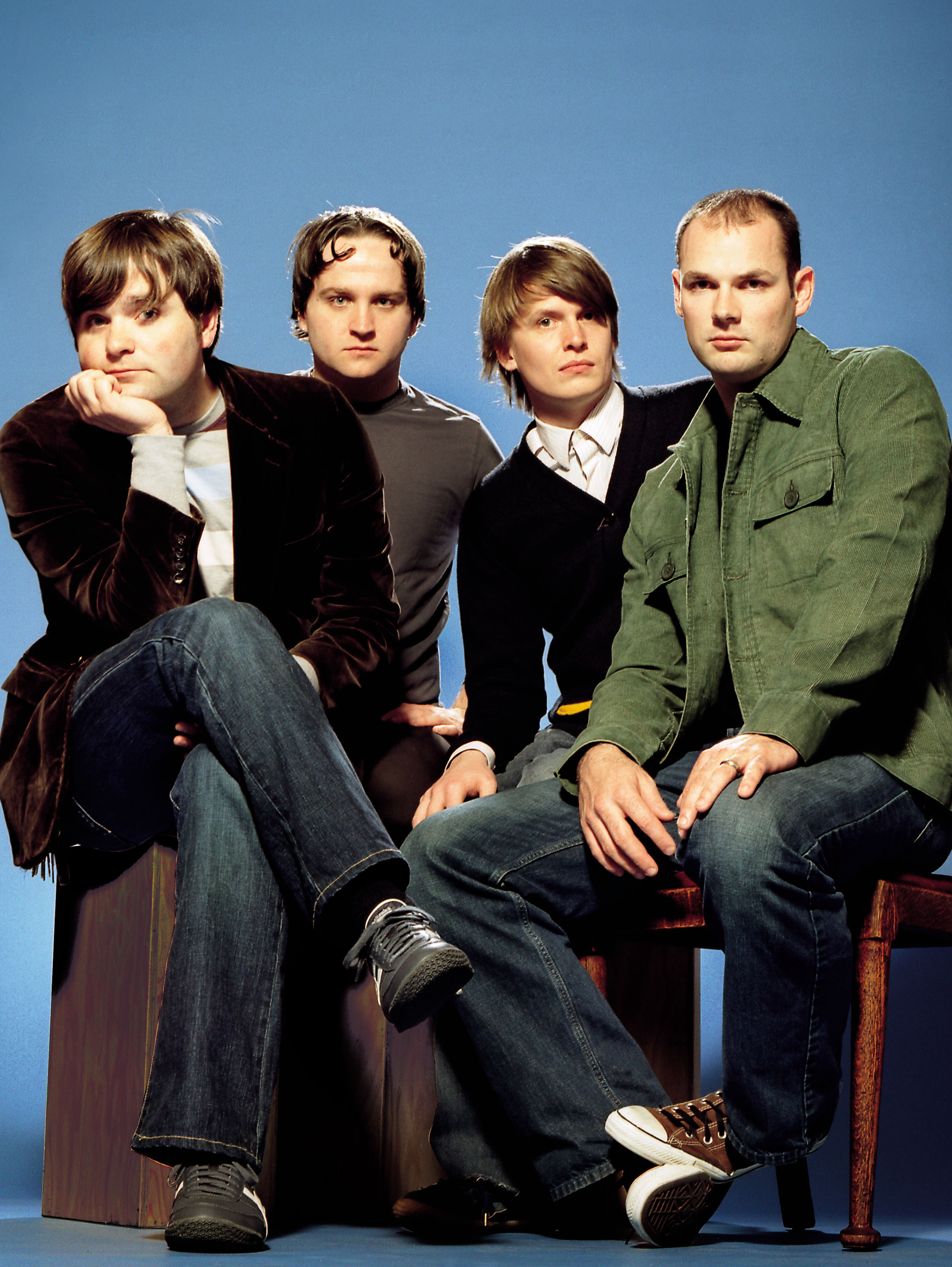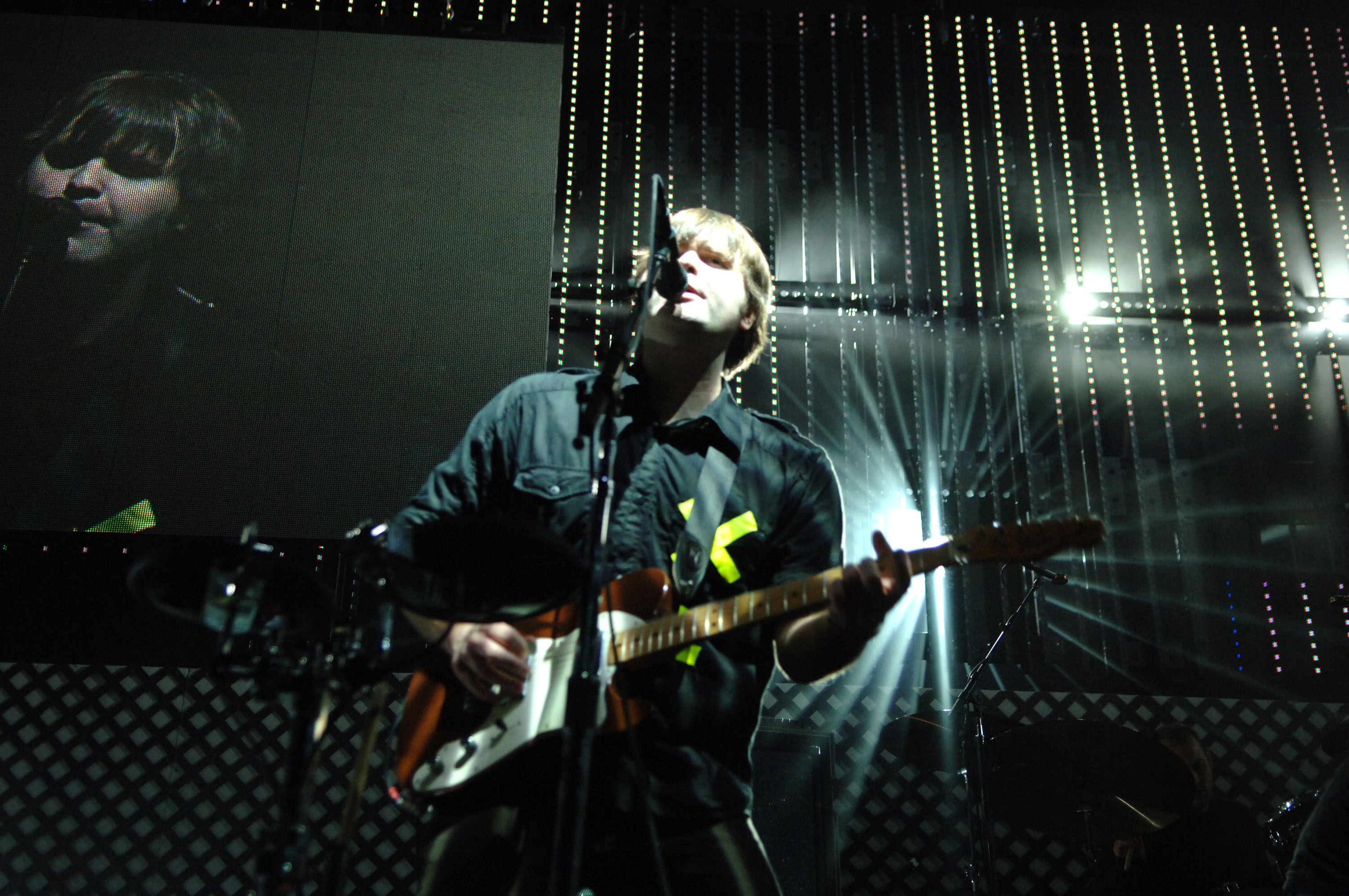This article originally appeared in the September 2005 Issue of SPIN.
Bruce Springsteen walks into a photo studio in Manhattan's Hell's Kitchen, looking for a place to sit. There are plenty of familiar faces around him on this early fall day—Bonnie Raitt, Jackson Browne, Little Steven—but for some reason Springsteen makes a line toward the two pasty-faced guys on the couch.
"Mind if I sit here?" he asks. Ben Gibbard and Nick Harmer, the cushion monkeys in question, voice no objections. Mostly because they are scared shitless. "I'm Bruce," he says, plopping down next to them. Within minutes, Harmer is nervously swaying his legs back and forth, and the only thing Gibbard can think is "Nick, you're getting really close to him. He's going to flip out if you touch him. Don't touch the Boss. Don't touch the Boss!'"
It's strange to imagine that Bruce Springsteen would go ballistic over a little accidental footsie—after all, he once wore a bolo tie and sang about tunnels of love. But it's especially strange, considering that Gibbard and Harmer have every reason to be within knee-knocking distance of a legend: Their band, Death Cab for Cutie, has sold almost half a million copies of its last album, 2003's Transatlanticism, on the small Seattle label Barsuk. They were invited to join the 2004 Vote for Change tour alongside Springsteen, R.E.M., Pearl Jam, and Dave Matthews Band. To a certain segment of the population—indie nerds, The OC fanatics, soundtrack czars—they're the biggest band in the land.
And yet, when Springsteen asks for a little room on the couch, they behave just the way you probably would—awkward, kind of uncool. In fact, everything about the members of Death Cab—singer/guitarist Gibbard, 29; bassist Harmer, 30; guitarist/producer Chris Walla, 29; and drummer Jason McGerr, 31—may seem strangely familiar. They like comic books and Woody Allen movies, and grew up on Pixies and U2. In fact, it's almost as if they're living their fans' lives, if their fans had decided not to go to grad school or hadn't quit their crappy high school band before they got any good. Who knows? Maybe they remind you a little bit of…you.
[caption id="attachment_id_340244"]  Wendy Redfern/Redferns[/caption]
Wendy Redfern/Redferns[/caption]
For almost ten years, Death Cab's mirror-image aura has inspired a passionately personal following, so much so that audience and artist look almost the same—handsome, but in a Muppety way. ("They've made the boy next door into a superhero," says Liz Riley, a 32-year-old fan from Seattle. "They're the kind of guy you can take home to Mom but still will sneak into the movies with you.") They named their first compilation You Can Play These Songs With Chords because, frankly, you probably could.
"'Death Cab' is almost like a password for people willing to go outside the mainstream to connect with music," says The OC creator Josh Schwartz, who gave the band's followers a fictional flesh-and-blood embodiment when he introduced the show's sincerely geeky Seth Cohen. "You feel like 'I love listening to their music, and I wish I was friends with them.' The reason people connected with Seth is the same reason that they connected with Ben: Most people feel pretty insecure most of the time, and hearing that in music makes you feel less alone."
But with the upcoming release of Plans, Death Cab for Cutie's first album for Atlantic, their fans may become a lot less lonesome and their audience a lot less similar-looking. The mainstream may start to look like them.
"At some point, you have to wonder if they're the R.E.M. of our generation," says ex-Dismemberment Plan frontman Travis Morrison, who toured with Death Cab in 2002. "By their fifth album [Document], R.E.M. started entering the pop-culture arena in a real way. It's an interesting parallel. It could happen."
But it hasn't yet. Despite having flown in Pearl Jam's jet and having played Scrabble with actor Tim Robbins (he won), Death Cab still belong to their fans. As proof, consider what happened to Harmer while staying at the Soho Grand Hotel, where, after a late-night drink with Eddie Vedder, he ran into another famous Bruce. The two had crossed paths before, in a Sun Valley, Idaho grocery store, and the encounter ended with an 11-year-old Harmer being told to fuck off. This time the ennobled bassist looked up, smiled, and said, "How's it going?"
To which the star glowered and replied with a terse "Fuck you."
The lesson learned? Fame is relative. Also Bruce Willis is a grade-A douche bag.
https://youtu.be/uizQVriWp8M
Five years ago it would have been hard to imagine a band like Death Cab selling close to half a million records on a tiny label with a PO box address in Seattle, and then getting a major-label deal. Radio was divided into two camps—venomous rap-rock and lacquered teen pop—and Linkin Park were considered by programmers to be "alternative," in the sense that they were an alternative to 3 Doors Down and Creed.
But around the fall of 2003, when Transatlanticism was released, encouraging reports started coming back from the field. "There were a lot of people we knew early on that were suddenly reaching a level of notoriety," says Gibbard. "Bright Eyes, Modest Mouse,…Trail of Dead—bands we were friends with and played with had this newfound attention."
This was partially because tastes were changing (let's all hope Ross Robinson worked in a good royalty rate for producing those Korn and Limp Bizkit records). But it was also because a horde of music geeks had gradually sneaked into the record industry through the back door, taking jobs as music supervisors and advertising licensees. Imagine the end of Return of the Jedi, only with the Ewoks wearing Pavement T-shirts. "All these people are our age or nearly our age," says Walla. "And it really seems to me that everyone of these people was probably Ducky [from Pretty in Pink] in high school."
Which was good news for Death Cab. Since forming in Seattle in 1997, Gibbard, Walla, and Harmer have slowly secured a reputation as tunefully adroit aesthetes, taking care to construct well-disciplined but wriggly songs that never stray too far from a good hook. Their lyrics are mostly about love, written from a deeply personal vantage point, but encoded with enough we've-all-been-there references—drunken long-distance calls, old photos stuck in the glove compartment—to make them easily relatable.
Each album—from 1998's Something About Airplanes to 2000's We Have the Facts and We're Voting Yes to 2001's The Photo Album—has been better than the one before, spurring countless cramped, friendship-testing van tours. So, by the time they started to consider the big-label deals that had been dangled in front of them since the start, Harmer says, "we actually had some cards of our own that we could trade in."
But why go to the bargaining table at all? "My first reaction was that it made no sense," says Nada Surf's Matthew Caws, a friend of the band and, until last fall, a Barsuk labelmate. "Why change? They already had it made—making great records, each one selling more than the last. But if I put myself in their shoes, I can imagine having some curiosity."
[caption id="attachment_id_340247"]  Wendy Redfern/Redferns[/caption]
Wendy Redfern/Redferns[/caption]
Caws' band was one of hundreds of groups to get wooed and screwed by multinational conglomerates during the mid-'90s alt-rock gold rush and one of the few to actually live through it (their not-so-fortunate peers can now be found on Half.com, going for about $2.99 with free shipping).
Death Cab had been cautioned by Caws and other friends—Spoon and Harvey Danger, among them—to tread carefully, and indeed, the courting process was full of the sort of take maneuvers the band had been warned about. A meeting with Elektra turned sour when Gibbard started quizzing president Sylvia Rhode about the company's treatment of Nada Surf and Spoon; someone then made a quick phone call, and soon enough, A&R rep and former Cars leader Ric Ocasek was whisked into the room as an in-the-flesh incentive.
"They trotted him out and made him a part of the meeting," says Harmer, who was the band's manager until 2003, and whose ability to carry multiple conversation threads and juggle numerous tasks gives him a sort of den-mother quality. "It just wasn't right."
The members swear they got a good deal—two albums, with an option on a third, and a guarantee that Walla can continue to produce their records—plus a satisfying payday. "It's more akin to Sonic Youth's [legendarily artist-friendly] deal [with DGC in 1990]," says Gibbard. "It's a sizable amount of money, but it doesn't knock you into another tax bracket."
For fans, though, it's no longer a question of selling out—a somewhat antiquated mind-set that doesn't carry much weight with people under 30 who watch Fox every Thursday night and download sessions off iTunes. It's the fear of diminishing returns, of seeing a beloved band sink under the expectations of a growing audience, only to become a whimpering reminder of what made them great in the first place. At some point, you do have to wonder if they're the R.E.M. of our generation. And worry.
https://youtu.be/ar1_tEg4Nxs
Chris Walla has his own fears about putting out Plans. When he thinks about the record, he experiences the same anxiety he gets at 4 A.M., after having one of those dreams in which you go to school with no pants on: "There's just this feeling of 'Oh my God. Is it done?'"
Walla—blond and strong-jawed—is a liner-notes nerd; if oversize posters of Brian Eno and Steve Lillywhite had existed during his teens, he would've had them on his bedroom walls. He listens to music in a Beautiful Mind fashion—quietly, astutely, as if he's receiving it directly to his brain. When Fleetwood Mac's "Rhiannon" comes on the stereo in a Midtown Manhattan lounge, he nearly gasps in appreciation, then conducts the song with his hands, picking up on the smallest shifts in instrumentation, down to the vibraphones.
Harmer describes Gibbard and Walla's relationship in Spinal Tap terms: Ben is fire, Chris is ice, and everything else is lukewarm water. He's only half kidding. "Ben is focused on destination and goals, very much a logical person," he says. "And Chris is definitely a wanderer." Plans is the fifth Death Cab album Walla has produced—he owns a studio, Hall of Justice, in Seattle, where he's worked with such artists as the Thermals and John Vanderslice.
But it may be the last for awhile; he says he'd like to observe someone else. For now, his biggest task is keeping Gibbard focused. "When he's feeling insecure about a song, he'll over arrange and over record the demo," Walla says, "and sometimes—not so much for this record, but definitely for Transatlanticism—it's a struggle to get him to strip that stuff away."
Plans was written and rehearsed in a farmhouse in the boondocks of Massachusetts and finished in Seattle. There was pressure, but it came from within the band, not their new patrons. "Every time I listen to it, it taxes me the same way a live performance does," says McGerr, who joined the band in 2003. "It takes something physically out of me."
The biggest weight, though, was on Gibbard, who had successfully mined years of heartbreak for Transatlanticism, one of the most unsettlingly accurate breakup records of all time: The album's closer, "A Lack of Color," takes a wistful refrain ("I should have given you a reason to stay") and cloaks it in a singsong melody so pervading it's impossible to forget; like a doomed relationship, it's always in the back of your mind. For Plans, Gibbard once again had to turn inward and open up his insecurity to the world. The only problem was that Ben Gibbard has never been happier in his life.
[caption id="attachment_id_340250"]  Wendy Redfern/Redferns[/caption]
Wendy Redfern/Redferns[/caption]
The House That Indie Rock Built is an almost 15-minute drive from downtown Seattle, tucked into a quiet sigh of a neighborhood where baby strollers squeak by and visitors can leave their car doors unlocked. Gibbard and his girlfriend, Joan, bought this 1930s Tudor number in the spring of 2004, right around the time Transatlanticism was being cherry-picked by taste-making college-radio DJs, and his synth-pop side project, the Postal Service, had an unlikely hit album in Give Up, selling 650,000 copies. These were records about gut-twisting breakups and whispered vows, their songs spilling out of the radio at the exact moment each listener needed to hear them. They have made Gibbard a mildly rich man.
And yet, on this midsummer afternoon, there are no signs of Cribs-ian lavishness, nary a hint of Pimp My Ride vulgarity (Gibbard's dinged silver Buick, parked outside, needs to lose the record-label bumper stickers before Xzibit would even take a look at the thing). The house is tastefully decorated with vintage furniture and features a framed poster of Woody Allen's Interiors and a sizable his-and-hers vinyl collection. The last big party Gibbard threw was when some of his fellow Death Cabbers—all of whom live nearby—crashed on New Year's Day, after a marathon Lord of the Rings screening.
Gibbard plods around the living room in jeans and a striped shirt, his glasses flashing white with the reflection of the sun. He was supposed to stain a new front door today, but the band was in rehearsals all afternoon (if things go as planned, they'll be on the road for most of the next 12 months).
With his Lego-figure haircut and boyish face, it's not hard to understand why he was picked to do some Japanese TV commercials as a kid, while living in Yokosuka with his Navy officer dad. "It was a cash cow for a lot of Caucasian people in Japan," he says. "If you had blond hair, it was just, like, snap! But no matter what researchers you have, you won't be able to find any of the actual footage."
https://youtu.be/zYTEb7fVdzw
Gibbard met Joan in early 2003 when she was living in Chicago, just after he'd finished writing the songs on Transatlanticism. "That record chronicles two years of my life, after being in a relationship for a number of years, moving through a slew of women. For some people, it's fulfilling. I'm just not that guy." Soon, he and Joan packed up her stuff and drove to Seattle. they are a remarkably at-ease pair, collaborators and coconspirators; she even sang at a Postal Service gig in Spain. "When you find somebody who makes you feel good, it's like, 'Why is this so difficult?'"
Yet Plans is fraught with images of love being a prelude to death. "What Sarah Said" describes a hospital room that "reeks with piss and 409" and closes with a half challenge, half lament of "Who's gonna watch you die?" "I Will Follow You Into the Dark" is a stark pledge of posthumous companionship—a lovely notion, though it kicks off by matter-of-factly stating, "Love of mine / Someday you will die." It's not that Gibbard is mopey; it's just that he's the destination guy.
[caption id="attachment_id_340253"]  Jeff Kravitz/FilmMagic, Inc[/caption]
Jeff Kravitz/FilmMagic, Inc[/caption]
"I'm always looking at the end," he says. "Do you want to be with somebody that you're going to have to sit with in a hospital waiting room, not sure if they're going to live or die? I had a friend who lost someone, and it's like, 'Well, at least you have the memories. You didn't have to wish what it was like to be with someone.' Well, fuck, that sounds way more depressing to me!"
None of Plans' seemingly more specific songs come from personal experience—Gibbard has not had to watch anyone die recently, and he does not keep journals of lyrics sitting around (when he does take notes, he says, "they usually end up crumpled up in my wallet, and then disappear"). But the album is fiercely sincere, bringing up a point many of Death Cab's naysayers harp on: The guy is too damned sensitive. Rock songs are supposed to play it cool when it comes to love, to treat it from a healthy distance, as a catalyst for, or a distraction from, getting laid. Or as a reason to freak out completely. Getting into the sticky middle area—the uneasy, goofy moments that are often forgotten among the melodramatic highs and lows—is for pop softies.
Gibbard, not surprisingly, disagrees. "I was really frustrated when I got the Pavement DVD," he says. "One of the videos is for 'Major Leagues,' which is a great song, and it's [Stephen] Malkmus just picking around, basically winking through the video. I remember being upset with it, because it was one of my favorite songs from that record, and what was such such a beautiful sentiment in my mind was dealt with in such a tongue-in-cheek way."
"Probably 90 percent of all the songs that have ever been written are about love," Gibbard continues. "People forget that. I don't see how it became an unacceptable thing in the last five or ten years to write songs about love."
Joan arrives, and after sewing up a bit of Gibbard's jacket, they get into the Buick and head to Harmer's house, where the host will stand over the grill and wave his tongs at the neighbors. Driving behind them, one can see the detailed gestures of two people in love: the head-back laughter, the reassuring shoulder pats. It's a movie-script ending—the kind a destination guy like Gibbard wouldn't want to write, but doesn't mind starring in.



